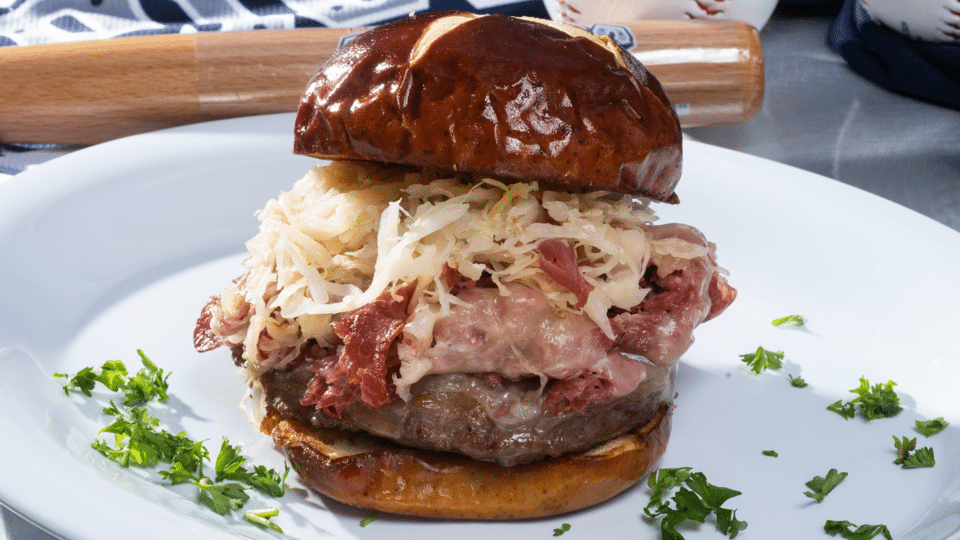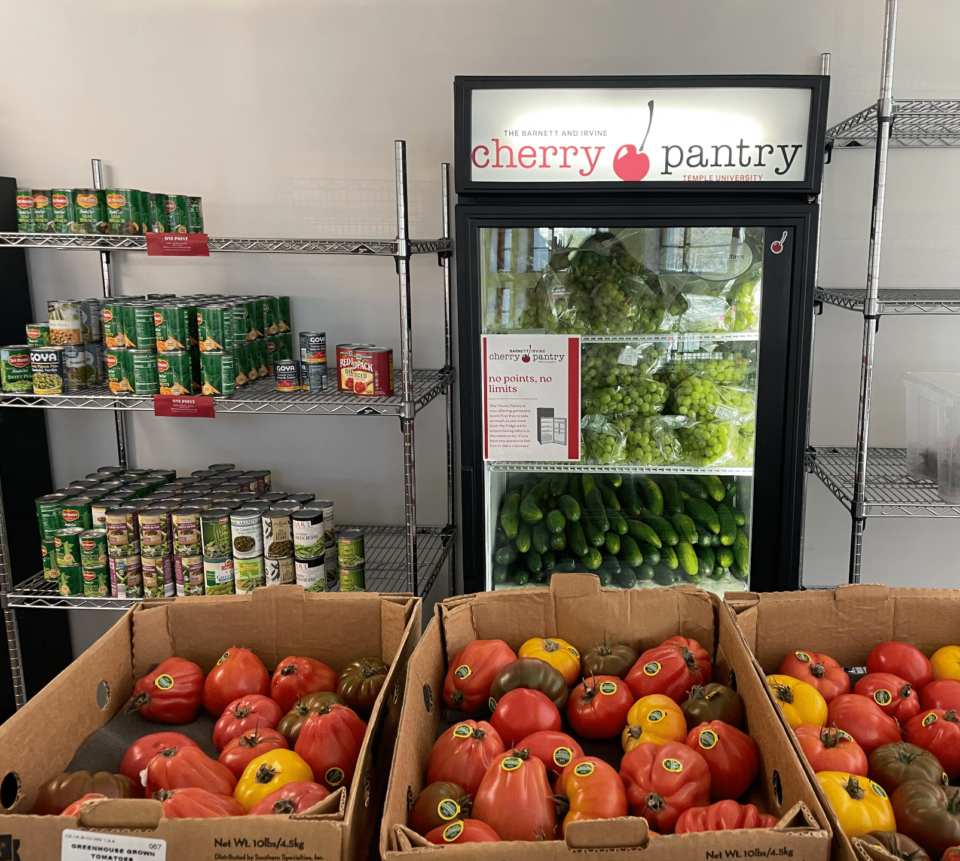By Kellyn McNamara
A weekend retreat brought me to Rehoboth Beach, Delaware, where I snagged some brews and bites at the local Dogfish Head Brewery & Eats (seen to left), and even got to tour the Brewing Co. Headquarters in Milton, DE.
From what I gathered, Dogfish Head is not your average brewery. In fact, pretty much everything about it is out of the ordinary. Dogfish’s creative and, at times, ingenious approaches are what makes it unique. Dogfish Head was the first brewpub in Delaware, and began as the smallest microbrewery in the United States. The name comes from Dogfish Head, Maine, where Founder and President Sam Calagione spent his childhood summers.
Sam fell in love with craft beer while working at Nacho Mama’s Burritos in Manhattan, where he attended classes at Columbia University. Nacho Mama’s stocked craft sips like Sierra Nevada, the first real microbrew Sam had ever tasted. Sam left Columbia and relocated to Delaware to pursue his two loves: his wife Mariah, and brewing beer.
Sam began experimenting with a variety of spices and ingredients in brewing – anything he could find the in the kitchen. “Spices, other beers, and even foods like tomatoes,” said our brewery tour guide, Peter Olsen.
Years have not dulled Sam’s creativity. In fact, Dogfish Head’s current feature, Choc Lobster, may be Sam’s most creative brew to date: a porter made with dark cocoa, basil, and 40 whole lobsters. A taste of Choc Lobster starts earthy, develops into smooth chocolate, and finishes with a slight saltiness.
Dogfish Head was not always the massive Delaware brewery it is today. When the Rehoboth brewpub first opened in 1995, they brewed on a 12-gallon system that could not keep up with customer demand. In 2002, the brewery expanded to its current location in Milton, which is certainly equipped to meet the needs of patrons.
Driving up to the Milton brewery, I saw several large, central silos, which I later learned are where the grain is milled. After mashing, Dogfish Head sends the spent grain to feed local cows and pigs, which become main courses at the brewery’s Rehoboth location. “That’s why your burger might taste like your beer!” joked Peter.
Inside the factory, each process afforded its own area: mashing, boiling, cooling, fermenting, conditioning, and packaging. The conditioning room housed three wood-aging casks, the largest in the United States since prohibition. Two of the casks are made of American white oak, and are used to condition Immortale, Red and White ale, and, my personal favorite, Burton Baton. Oak-aging acts to subdue some of the harsh flavors generated by the brewing process. The casks’ interiors are cleaned annually with dry ice to expose fresh wood, and produce the same flavor, year after year. The third cask is made of Palo Santo wood, imported from Paraguay. Palo Santo wood is so dense that it took 17 diamond-tipped blades to chop down one tree for the cask. This cask is used to age only Dogfish Head’s Palo Santo Marron, which Peter described as “Guinness on steroids.”
The tour concluded with a free taste of four Dogfish Head brews. But before I begin the taste summary, a word about DFH’s Ancient Ale Series. The Ancient Ale Series began in 1999 when Dogfish Head began working closely with Dr. Pat McGovern, a leading expert in ancient beverages. McGovern’s expertise allowed Dogfish Head to resurrect some of the brews enjoyed by the ancients.
Ta Henket, one of the Ancient Ales, is based on Egyptian brew formulas, decoded from hieroglyphs. Brewed with the same strain of wheat used by the ancients, along with chamomile, doum-palm fruit, Middle Eastern herbs, and whole loaves of hearth-baked bread, this brew is malty and smooth, with a tartness that is not overpowering, and a welcome sucker-punch of dry spice.
Next up was Theobroma, another Ancient Ale, inspired by the Mayans’ affinity for chocolate. We all love chocolate, but the Mayans loved it so much that they named it “Food of the Gods,” or, Theobroma. In the spirit of the Mayans, this ale is brewed with Aztec cocoa powder, cocoa nibs, honey, chilies and annatto. The brew is a surprising amber color, and tastes almost like a pilsner, but with a spicy, chocolate middle, and a bitter finish.
The third pour was My Antonia, a continually-hopped imperial pilsner named after the novel by Willa Cather. This bottle-conditioned brew did not disappoint, with crisp, hoppy, and citrus flavors, and a clean, dry finish. “It’s a lager for ale-lovers,” Peter said about My Antonia.
Last was Dogfish Head’s most famous brew, the 90 min IPA. The 90 min’s claim to fame is its well-balanced, even-hopped taste. The taste comes from a process known as continual hopping, which, Peter explained, is when “hops are added over the entire duration of the boil.” Dogfish Head was the first brewery to continually-hop their beer, thanks to a vibrating-hop-dispenser product, developed by Sam Calagione, known as “Sir Hops-A-Lot.” Hops-A-Lot was replaced after Sam patented a new, more efficient machine, “Sofa King Hoppy.” If you’ve ever tasted a 90 min IPA, you know that the biting hop flavor lives up to the machine’s name.
If 90 min isn’t enough push for your palette, 120 min IPA might be more your pace. My boyfriend and I bought a 4-pack of 120 min at the Milton brewery’s gift shop, and decided to split one bottle between the two of us. We passed the pour of 120 back and forth in our hotel room, taking small sips of Dogfish Head’s most notorious IPA. The taste was exceptionally strong and hoppy, with a range of sweet and spicy flavors, almost like a port wine. For up to a minute after each swig, a whiskey-burn lingered in my chest. It was fabulous.
We topped off our night with bites and brews at the Rehoboth Dogfish Brewery & Eats. As we made our way into the packed pub, we squeezed our way past patrons to secure a seat at the bar. We chatted with our bartender, Teresa Anderson. She was a lively, bubbly lady who cracked a new joke each time she rounded the bar. “I give out tastes of beer, and I give out jokes, too!” she said, beaming. While at the bar, I tried the Limited Release Positive Contact, brewed with Fuji apple cider, and spiced with faro, cayenne, and cilantro. The taste was slightly sweet cider and flavorful hops, with a smooth finish. As we sipped our pours, I struck up a conversation with a passing busboy, pointing out that he looked busy. “Yeah,” he smirked, “some nights, I don’t stop moving after 4:00.”
Next I tried the Wit IPA, a collaborative effort between Dogfish Head and Iron Hill Wilmington. I think I struck gold with this one. It had flowery, punchy, alpha-hops at the beginning, but a smooth, malty finish, with citrus undertones all throughout.
The bites at Dogfish are equally tasty. We munched on fried calamari with spicy marinara and the “off-centered” hummus platter, both plates I would recommend. We ended our night at the on-site gift shop, where patrons can grab merchandise from stickers to dog collars, and beer-to-go. I grabbed a four-pack of the Burton Baton, a cask-conditioned ale with strong, aromatic flavors, a sweet, flowery beginning, and a smooth finish.
The end was bittersweet, like a good IPA, but there is life after Dogfish Head. The next morning, we made our way to The Purple Parrot Grill on Rehoboth Avenue for breakfast and $2 Bloody Marys and Mimosas before 1:00 p.m. I’m of the belief that home fries make or break a breakfast, and Purple Parrot’s are exceptional. In fact, a Purple Parrot breakfast is proven to cure pounding headaches associated with hangovers, and get this: during the special, your first cocktail is included with your meal.
A return-visit to Rehoboth is definitely in order, to check out all the fabulous restaurants I missed this time, but no matter where I choose to go, I’ll be sure to stop by Dogfish Head, my new favorite brewpub.




2 Comments